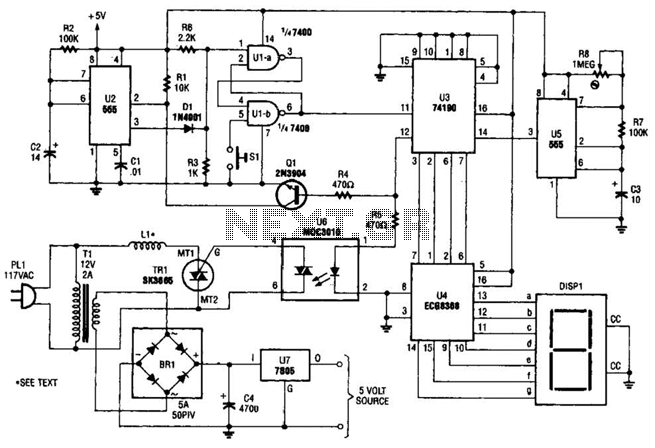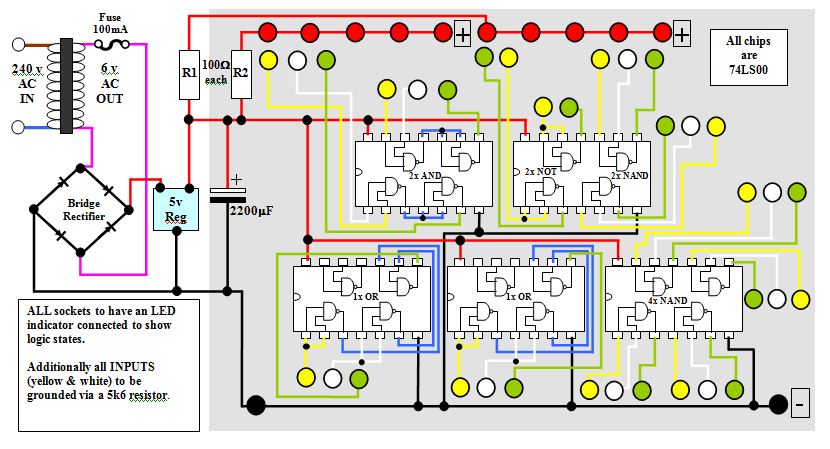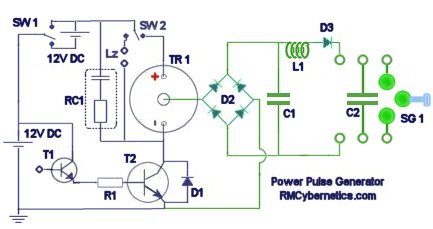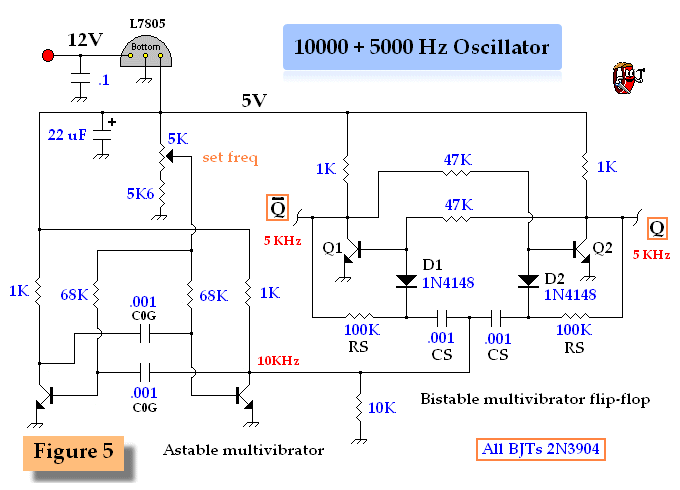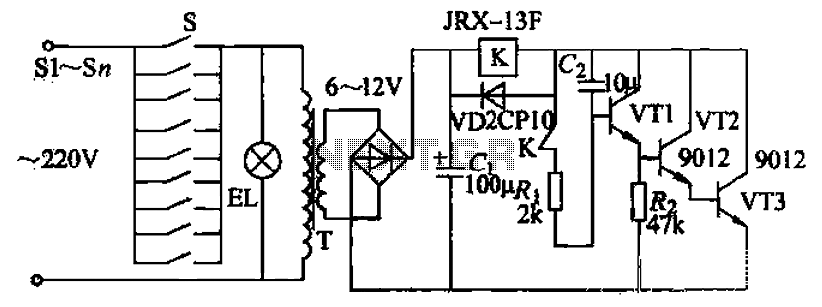
Solid state relay circuit controls the motor-way operation

The circuit illustrated in Figure 3-13 is an RC surge absorption circuit that includes a resistor (R) and zinc oxide varistors (such as MY31, MYH12, MYH20 types, etc.), which serve as an overvoltage protection device. The resistance R is typically chosen in the range of 20 to 40 ohms (with a power rating of 5W), while the capacitance C is selected to be between 0.22 µF and 0.47 µF. The varistor R has an optional flow capacity of 1 kA, with a nominal voltage rating of 430 V to 480 V (for AC 220 V applications) or 750 V to 820 V (for AC 380 V applications).
The RC surge absorption circuit is designed to protect sensitive electronic components from voltage spikes and transients that can occur in electrical systems. The resistor (R) and capacitor (C) form a low-pass filter that helps to dampen high-frequency voltage transients, while the varistor provides a clamping mechanism to divert excessive voltage away from the circuit.
The resistor R, rated at 5 watts, is critical in limiting the current that flows through the circuit during a surge event. The specified resistance values of 20 to 40 ohms are chosen to balance the trade-off between transient response time and energy dissipation. The capacitor C, with values ranging from 0.22 µF to 0.47 µF, provides the necessary capacitance to absorb energy from voltage spikes, thereby stabilizing the voltage level across the circuit.
The zinc oxide varistors, such as the MY31, MYH12, and MYH20 types, are selected based on their voltage ratings and energy absorption capabilities. These components are designed to exhibit non-linear resistance characteristics, allowing them to remain inert during normal operating conditions and to conduct heavily when the voltage exceeds their specified threshold. The optional flow capacity of 1 kA indicates the maximum current the varistor can handle without being damaged.
In applications where the circuit is exposed to 220V AC, the varistor is rated for a nominal voltage of 430 V to 480 V to ensure adequate protection. Conversely, for 380V AC applications, the varistor's voltage rating is increased to between 750 V and 820 V to accommodate higher transient voltages. This careful selection of components ensures reliable operation and longevity of the circuit in various electrical environments, providing essential overvoltage protection for critical electronic systems. Circuit shown in Figure 3-13. Figure, RC surge absorption circuit is, R, zinc oxide varistors (such as MY31 type, MYH12 type, MYH20 type, etc.), an overvoltage protection devic e. Resistance R- like to take 20 ~ 40C1 (big power 5w), capacitance C take 0. 22 ~ 0.47tF. Varistor R, optional flow capacity lkA, nominal voltage is 430 U1tnA 480V (AC 220V) or 750-820V (AC 380V).
The RC surge absorption circuit is designed to protect sensitive electronic components from voltage spikes and transients that can occur in electrical systems. The resistor (R) and capacitor (C) form a low-pass filter that helps to dampen high-frequency voltage transients, while the varistor provides a clamping mechanism to divert excessive voltage away from the circuit.
The resistor R, rated at 5 watts, is critical in limiting the current that flows through the circuit during a surge event. The specified resistance values of 20 to 40 ohms are chosen to balance the trade-off between transient response time and energy dissipation. The capacitor C, with values ranging from 0.22 µF to 0.47 µF, provides the necessary capacitance to absorb energy from voltage spikes, thereby stabilizing the voltage level across the circuit.
The zinc oxide varistors, such as the MY31, MYH12, and MYH20 types, are selected based on their voltage ratings and energy absorption capabilities. These components are designed to exhibit non-linear resistance characteristics, allowing them to remain inert during normal operating conditions and to conduct heavily when the voltage exceeds their specified threshold. The optional flow capacity of 1 kA indicates the maximum current the varistor can handle without being damaged.
In applications where the circuit is exposed to 220V AC, the varistor is rated for a nominal voltage of 430 V to 480 V to ensure adequate protection. Conversely, for 380V AC applications, the varistor's voltage rating is increased to between 750 V and 820 V to accommodate higher transient voltages. This careful selection of components ensures reliable operation and longevity of the circuit in various electrical environments, providing essential overvoltage protection for critical electronic systems. Circuit shown in Figure 3-13. Figure, RC surge absorption circuit is, R, zinc oxide varistors (such as MY31 type, MYH12 type, MYH20 type, etc.), an overvoltage protection devic e. Resistance R- like to take 20 ~ 40C1 (big power 5w), capacitance C take 0. 22 ~ 0.47tF. Varistor R, optional flow capacity lkA, nominal voltage is 430 U1tnA 480V (AC 220V) or 750-820V (AC 380V).
